Dishwasher Selection Guide: expert tips, types of dishwashers, their pros and cons
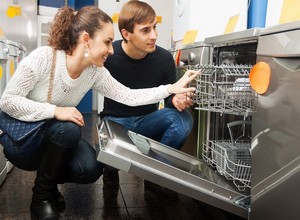 The pace of life is quickening, and people have less and less time for housework.
The pace of life is quickening, and people have less and less time for housework.
Therefore, domestic work naturally becomes automated.
One of the types of equipment, designed to facilitate the performance of routine duties, is a dishwasher.
We will tell you how to choose this equipment and what to pay attention to. Let's look at the advantages and disadvantages, tell you how not to get confused by the complex features.
And let's review the top 5 best dishwashers by price/quality for 2021-2022.
Table of Contents
- Pros and cons of dishwashers
- How to choose a dishwasher by installation type
- Dimensions of the automatic dishwashing machine
- How to choose the size
- Important Features
- How to choose according to the main programs
- Extra functions
- The best type of drying
- Which brand to choose: Top 5 best dishwashers by price/quality for 2021-2022
- A short checklist for choosing a dishwasher
- Useful video
The pros and cons of dishwashers
Before you make an informed decision about purchasing a dishwasher (or Dishwasher), it's important to understand the pros and cons of these kitchen gadgets.
Advantages of Dishwashers
Let's consider the main criteria in favor of the purchase of a Dishwasher:
- Saving time and effort. Perhaps this is the main reason why people decide to buy an automatic helper.
- Saving water. Numerous experiments and expert studies have found that machine washing consumes considerably less water than washing dishes by hand.
- There is no need for hot water supply. The automatic dishwashing machine is equipped with a water heating system, so there is no dependence on hot water supply.
- Disinfecting function. Washing dishes in the machine is carried out at much higher temperatures than the manual method. This allows for a disinfecting effect.
- Quality and gentle washing. Hot water and special detergents provide high quality washing of dishes. And the lack of mechanical action of coarse brushes and abrasives makes the treatment of dishes delicate.
- No need for contact with detergents. This parameter is especially relevant in the presence of allergies or individual intolerance of chemicals included in the dishwashing detergents. In addition, the PM will take care of the health and beauty of your hands and preserve your manicure.
- Possibility of alternative uses. In the dishwasher you can also wash racks and removable elements of the stove, trays, chandelier shades, vases, children's toys and much more.
Disadvantages of the microwave oven
And now we will tell you what disadvantages of dishwashers should be taken into account before buying:
- Requires free space. This is a weighty reason to think for owners of small kitchens. You will have to think in advance about the place of installation. If there is a need to purchase an automatic dishwasher, but there is no space for placement in the kitchen, it is worth looking at tabletop dishwashers. But it should be taken into account that the compact version is able to wash fewer dishes at a time than the full-size model.
- The need to use special means. Means for manual dishwashing are not suitable for PMs - you need to buy specialized ones. In addition, it is necessary to buy products to soften hard water.
- Not all dishes are suitable for washing in the machine. It is undesirable to wash there the items made of copper, thin glass, wood, valuable and antique dishes. It can quickly spoil such items.
- The need to accumulate dishes for a full load. To conserve resources and energy, you often have to hoard dirty dishes so you can load a full machine and wash everything at once. This is not hygienic, and not to everyone's liking.
It is better to buy machines that have a partial load option. - Requires human involvement, care and maintenance. Before loading, you need to clean off food residue, and sometimes even rinse the dishes. In addition, any appliance requires care and may require service.
- The quality of washing and rinsing. In the reviews, some users note that difficult dirt and soot are poorly washed, and the dishes are not fully rinsed of the remaining product. But this point depends more on the model and quality of equipment.
How to choose a dishwasher by installation type
According to the method of installation, dishwashers come in several types:
- freestanding;
- built-in;
- Table-top.
Let's talk about each type in detail.
Freestanding Dishwasher.
This technique can be placed at any convenient point in the kitchen.
Such machines have their own advantages and disadvantages.
| Pros: | Cons: |
|
|
Recessed models
These machines can be fully built under the countertop and hidden behind the front door of the set. In this case, the control panel is also hidden, and visible only when opening the oven.
Partial embedding is also possible, when only the control panel remains in view.
| Pros: | Cons: |
|
|
Tabletop dishwashers
These options are convenient for those who do not have a lot of free space, and will suit even the smallest kitchen.
You can place them on a table or any other surface.
| Pros: | Cons: |
|
|
Overall dimensions of washer-dryer.
According to dimensions the automatic dishwasher can be full-size, narrow and compact (tabletop).
Full-size dishwashers
Standard HMIs have the following dimensions: 60 cm in width, 60 cm in depth and 85 cm in height.
Such appliances hold a lot of dishes at a time: up to 16 sets. A good option for a large family.
These machines are also suitable for medium-sized or small families, but with frequent guests.
Narrow PMs.
Their dimensions differ from the standard in width.
Their width is 45 cm, while the depth is 60 cm, and the height is still the same 85 cm.
Such kitchen helpers are suitable for small and medium-sized families, holding about 9-10 sets of dishes when loaded.
Compact (tabletop) variants
The dimensions of these compact devices are as follows: the height is about 45 cm, width - from 50 to 55 cm, and the depth is usually equal to 45-50 cm.
Parameters of this type of devices may vary slightly in different models.
They are suitable for single people or very small families, and can usually accommodate a maximum of 4-5 sets of dishes.
How to determine the size
When choosing the size of the washing machine it is important to consider its capacity, internal layout of compartments, as well as family size, volume of dishes for daily washing and washing habits of household members.
Capacity
This parameter is characterized by the number of sets of dishes that can be loaded into the machine at one time.
One set is considered a set of dishes per person from 4 plates (salad, soup, second course and bread), a mug or glass, a cup or saucer for dessert, 2 forks and 2 spoons, and a knife.
It is important to remember that we have to wash not only and not so many plates, but also pans, pots with lids, duck pans, extra ladles, etc. So, loading a frying pan and a couple of pans with their lids "steals" from the stated number of sets of at least 3-4.
The capacity depends directly on the dimensions. The most compact desktop "dishwashers" can load a maximum of 4 sets, narrow - up to 10 sets, and full-sized - up to 16.
Compartments
The compact versions of dishwashers have the most uncomplicated internal arrangement of compartments. They are usually equipped with one sliding basket, inside which is another small basket for cutlery.
And narrow and full-sized "dishwashers" are arranged inside the same way. They can have two types of layout and arrangement of compartments: classic and modern.
With the first type, there may be 2 baskets inside, the lower of which is designed for large-sized dishes, and the upper - for smaller dishes. In addition, in the lower basket is additionally inserted a small basket for vertical washing of cutlery.
With the modern type of the internal layout of the washing machine there are 2 baskets and 1 upper tray for horizontal washing of the cutlery. As for the baskets, the lower compartment also stores large dishes, and the smaller ones are placed in the middle one.
What's important when choosing the size of the washing machine
It is necessary to take into account the limit of free space, which will be allocated for the installation of the "dishwasher" and its dimensions.
Capacity should be selected based on the calculation of necessary dishes per family. The bigger is the family, the more roomy is the dishwasher required. Singles and couples can pay attention to table-top devices.
The choice of equipment size is also determined by the habits of family members. К For example, if an average family is used to wash dishes often, not to accumulate them, it is not necessary to buy the largest "dishwasher".
If the household reacts calmly to the need to accumulate kitchen utensils until the machine is fully loaded, the oversized version will do.
Important features
Important parameters when choosing a dishwasher are: power consumption classes, washing and drying, as well as water consumption figures.
You can usually find all of these criteria in the form of letters on a label on the back of the appliance.
Energy Classes
The power (or energy efficiency) class determines how economical the power consumption of the device will be.
There are 7 of them: A-G. But it is mostly machines of classes A-C that are sold and bought, as they are more economical.
And the most economical machines are the ones, which are assigned classes A +, A++, A+++. They cost more than others, but pay for themselves in operation.
A-class appliances consume on average from 0.8 to 1.05 kW per washing cycle, B-class - from 1.06 to 1.09 kW, and C-class - from 1.1 to 1.49 kW.
You can use power more efficiently by purchasing a machine with a part-load function. This will help reduce your costs by 20-30%. On the plus side, it also saves water.
Water consumption
Water consumption figures also worry dishwasher buyers for obvious reasons. But the fears are unfounded: any "dishwasher" consumes much less water during washing than it would be spent by hand-washing the same amount of dishes.
Water consumption is also marked by classes A-G, but low classes can not be found on the market.
By the consumption category PMs can be economical (up to 14-15 liters per cycle), moderately economical (up to 17-20 liters) and not economical (more than 20-25 liters).
Economical consumption depends not only on the model and the characteristics of the washing machine, but also on its capacity. Compact desktop models spend only up to 9 liters of water, narrow models spend about 10, full-size - about 14 liters.
Washing class
This criterion determines the degree of cleanliness of the dishes coming out of the washing machine, as well as how successfully the machine copes with heavy soiling.
It is marked with the English letters A-G. But you can only find classes A and B on the market, lower classes are almost never produced.
Machines of class A perfectly wash dishes, and the equipment of class B leaves insignificant soiling with a total area of about 4 mm.
There are also devices of classes A +, A++, A+++. But they are more for professional needs where strict requirements are set for dish cleanliness. But for home use, class A is enough.
Drying class
This item shows how successfully the dishes will dry in the washer-dryer, whether or not there will be any residual moisture, splashes and stains.
You can find "dishwashers" on sale with 3 varieties of drying classes, which are indicated by letter markings A, B and C.
Class A means that the dishes are dried perfectly without any residual moisture. B indicates that there may be just a couple of drops of moisture remaining. And with class C the dishes will leave the machine quite wet.
It is worth noting that the higher the drying class, the higher the PM cost.
How to choose according to basic programs
When selecting, it is important to pay attention to the fact that the PM has at least the most necessary basic washing programs.
Let us consider them in detail.
Washing very dirty dishes (or intensive washing)
The mode is suitable for washing trays, pots, pans and other heavily soiled dishes.
The program provides for high temperature up to 75 ? Washing lasts for a long time, up to 3 hours. Sometimes this mode provides preliminary soaking of dirty dishes.
Such washing cannot be called economical in terms of water consumption and energy consumption. But you can not do without it in case of heavy pollution.
Standard washing
This sink is designed for everyday dishwashing without stubborn and heavy soiling.
The water is usually heated up to 55 ? СA standard cycle also takes quite a long time (1.5-3 hours).
This mode is quite practical in terms of energy consumption and water consumption due to less heating than the intensive program.
Express Wash .
This is a quick wash cycle that usually does not take more than half an hour.
It is washed with not very hot water (about 45 ?). Such program of washing sorts saves in the cases, when it is necessary to quickly freshen the dishes, to wash them with a minimum of dirt.
Due to the fact that the cycle is short, and the heating is small, water and electricity is wasted little.
However, this mode is by no means suitable for very dirty dishes.
Washing with half load
Not all the washing machines have this option. It allows you to wash dishes with partial loads, which is especially important for those who do not want and are not used to accumulate piles of dishes.
And also part-loading is used in order to save water and electricity.
Additional functions
In addition to the basic programs in the washing machine can be additional functions. Their presence and set varies depending on the model and price segment.
Let's consider the most common ones.
Extra rinse
A useful option that allows you to repeat the rinse stage after the end of the washing program.
With this, you can treat dishes with rinses better, as well as thoroughly wash all detergent residues from them.
An additional rinse after the main cycle can even be repeated more than once.
Automatic door opening at the end of the cycle
Opens the door after the end of the wash cycle.
It helps to prevent the formation of mold and mildew in the washing chamber, contributes to the complete drying of the dishes and the cavity from any residual moisture, and prevents the formation of unpleasant smells from the machine.
Delicate mode
Designed for washing delicate glassware, porcelain, valuable and fragile dishes.
The mode provides for washing with a slight heating of the water. Ideal for washing glasses.
Beam on the floor
This expensive option is designed for fully integrated models of the washing machines.
It allows you to project a luminous dot on the floor, which lights up or goes out at the end of the wash. In a more sophisticated version, a timer is displayed on the floor, showing the time until the end of the cycle.
This option is needed to inform the users in time about the end of the washing cycle.
Display .
The digital display allows full control over the process of washing.
It shows all details of the washing cycle, time to finish, error codes, and more.
Button lock
That's childproofing and accidental key presses protection.
If you pre-set the lock before the wash cycle, the buttons will lock when pressed during the wash cycle.
This option is not available in all the washing machines. It is necessary to find out in advance about its availability in a particular model.
Leakage protection
An indispensable component for the safe operation of your dishwasher.
This function detects a water leak from the dishwasher and triggers a chain of operations to stop the water supply.
Auto mode
This program minimizes human involvement in the dishwashing process.
The user just needs to specify the degree of dirt, and the machine itself picks up the parameters of washing.
In more advanced versions, it is not even necessary to specify anything: with the touch of a button, automatic sensors detect the level of dirt and regulate the washing process itself.
Quiet running mode
Allows you to keep the noise level of your dishwasher down. It allows you to run the dishwasher at night, so it won't disturb your sleep.
Other additional options
In addition to the features described above, the automatic dishwasher has a delayed start function, an audible alarm at the end of the cycle, soaking, a program for washing baby dishes, auto-determination of water hardness and other features.
As a rule, more expensive devices have more features.
What type of drying is better
Drying in dishwashers can be implemented in different ways. Each type of drying has its own pros and cons and features.
Condensation drying
This technique is based on the phenomenon of condensation. Water on the dishes turns into condensation on the walls of the washing chamber, which goes down.
This type of drying refers to budget options. And the disadvantages of "dishwashers" with condensation drying are: long drying time of dishes, the possible presence of traces of residual moisture on the thus dried dishes.
Machines with condensation drying are suitable for those who are not confused by the duration of the process, and also for those who do not have requirements for perfect dryness of dishes.
Ventilation
Another name is active condensation. Water from dishes also condenses on the walls of the washing machine, but plus the dishes are blown around by a fan.
These devices are more advanced than just models with condensation drying. Such drying is faster, and the output is more satisfying than simple condensation capabilities.
The vented dishwashers are good for those looking for quality at an attractive price.
Turbo Dryer
Other names are convection, convection drying. This drying technology is more expensive, complex and advanced than other types.
Drying of dishes is due to the hot blowing of the fan with a heating element. Therefore, the process is accelerated, which is a big plus of this method. The dishes come out without residual moisture.
But not without disadvantages: washing machines with such drying are more expensive, and the process itself is rather energy-consuming.
Dishwashers with turbo dryer are suitable for those for whom efficiency and speed of drying of dishes are important, and those who are not embarrassed by higher price of such machines, as well as power consumption.
Which brand to choose: Top 5 best dishwashers by price/quality for 2021-2022
To make it easier to decide on the choice, for example, we will present a review of the 5 best dishwashers by price/quality ratio for 2021-2022.
Electrolux EES 948300 L.
The built-in dishwasher of the famous Swedish brand definitely deserves attention. With standard dimensions it is compactly hidden behind the front panel without disturbing the style of the interior. Adjustable legs allow it to conveniently adjust to the height of the countertop.
With this set of features, the price of the machine is justified and reasonable. And the intuitive QuickSelect one-touch operation makes washing up fantastically easy.
The wash chamber with convenient compartments can hold up to 14 loads of dishes. In addition to the 8 main wash programs, there are also intensive and delicate glass washing modes. These options combine with air drying technology to ensure perfectly clean and dry results.
And the projection of a two-color beam on the floor will tell you in time about the end of the cycle.
Bosch SMV25EX03R
The German brand can rightfully be proud of this creation. The full-built model is hidden behind the headset, and the technology "Beam on the floor" allows you to track the stages of washing.
The price of this model taking into account all the options is more than attractive.
Five washing programs are provided, among which there are night, automatic, economy, intensive and hour programs.
The maximum load is 13 sets, and the interior space of the washing chamber is optimized according to the user's wishes. This is achieved by the Rackmatic system which allows the height adjustment of the upper compartment.
Additionally there is the possibility of half loading. This will not accumulate dirty dishes, while saving water and energy.
Safety parameters are also on a high level: this technology of glass protection, safety valve and closed system of leakage protection. This is safety and washing quality in a successful tandem.
Weissgauff BDW 4543 D
This built-in narrow model is compact and economical. And AquaStop technology that prevents leaks allows you to be confident in its safety.
Water consumption is only 9 liters per cycle with a capacity of 9 sets.
There is a fairly extensive list of programs, among which, in addition to the basic ones, there is a delicate mode, automatic program, as well as the possibility of partial loading. The middle basket can be adjusted in height even when the machine is loaded, which allows to use the entire space of the sink rationally.
There is a handy display and the control is fully electronic. And the option of refill will not forget anything and maintain perfect cleanliness in the kitchen without unnecessary hassle.
Candy CDCP 6/E.
This compact desktop model is indispensable for a small family. It comes with a capacity for up to 6 place settings and consumes only 6.5L of water per cycle.
Thanks to its modest size, there is enough space for it even in the smallest kitchen.
At the same time, it has electronic control, economical power consumption and high efficiency classes of washing and drying of dishes.
And its price will make it easier to work in the kitchen of those who can not yet afford a full-size washing machine.
Beko DIS 25010.
Narrow and compact version of built-in appliances.
In spite of it it holds up to 10 sets of dishes, and differs economic power consumption (A +). The drying type is condensation. The machine control is electronic.
The model is equipped with "Ray on the floor" technology. Full leakage protection is provided. There are indicators of the presence of salt and rinse aid, and the dish basket is height adjustable.
It comes with a 2-year warranty and service.
A short checklist for choosing a dishwasher
So, let's summarize.
Here are the parameters that you need to pay attention to when choosing a dishwasher:
- It is important to consider the size of the dishwasher and the space limit for it.
- The number of family members, as well as housekeeping habits, is decisive in the choice. Capacious large models are better to buy for large families or those who can safely save dishes until a full load. In other situations, it is better to look at a smaller-capacity PM.
- It is important to pay attention to basic and additional programs and to have a clear idea of what is useful and what is not, so as not to overpay for extra functionality.
- To save electricity you need to look at the energy efficiency class: it must be A or higher.
- Washing and drying quality will determine the washing and drying classes, as well as the type of drying in the machine.
- Some features, such as part-loading, allow you to significantly save resources and still have a full capacity machine in case you need it.
Useful video
Watch this video to find out how to choose a dishwasher:



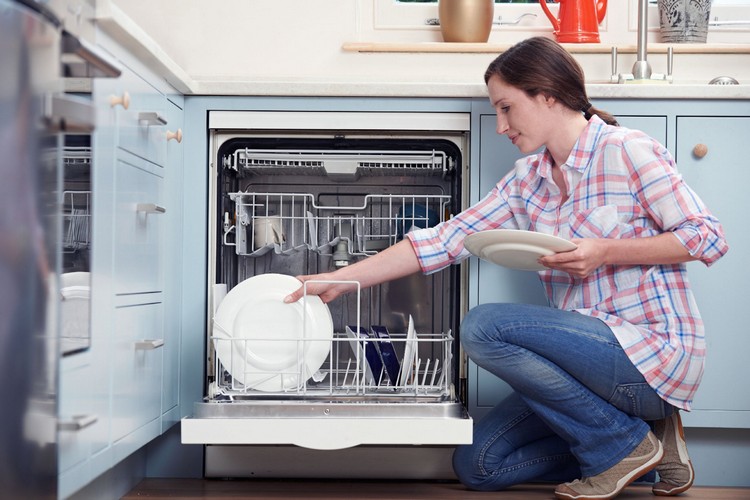
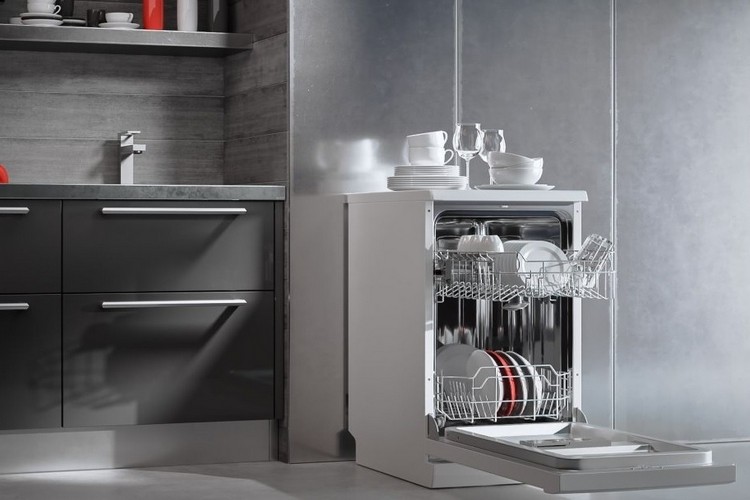
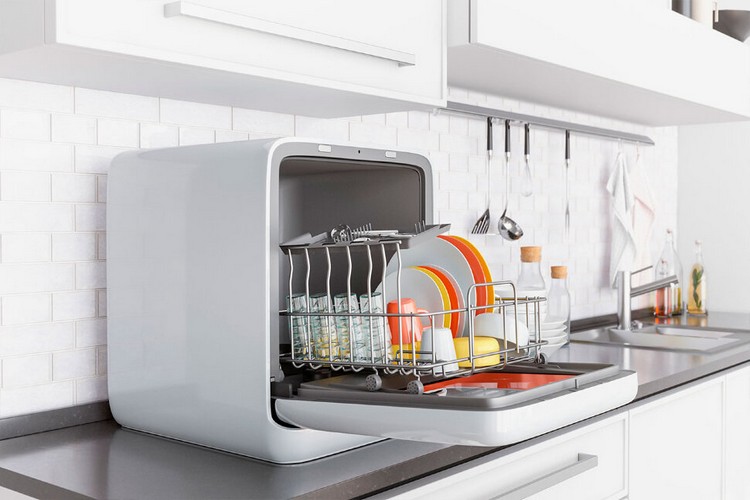

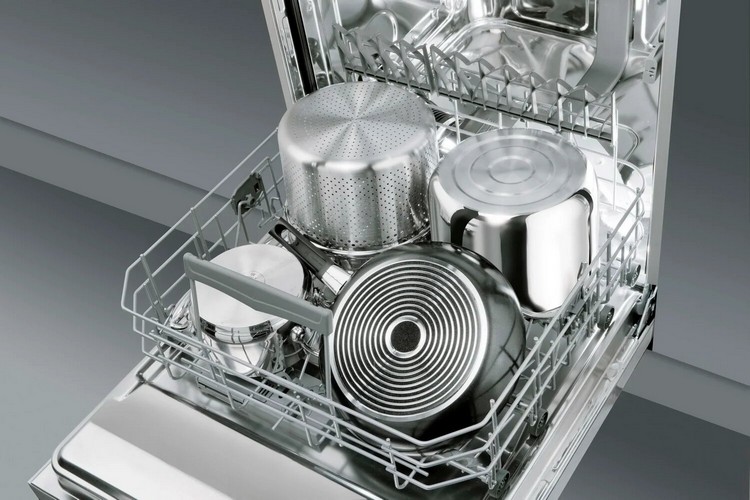
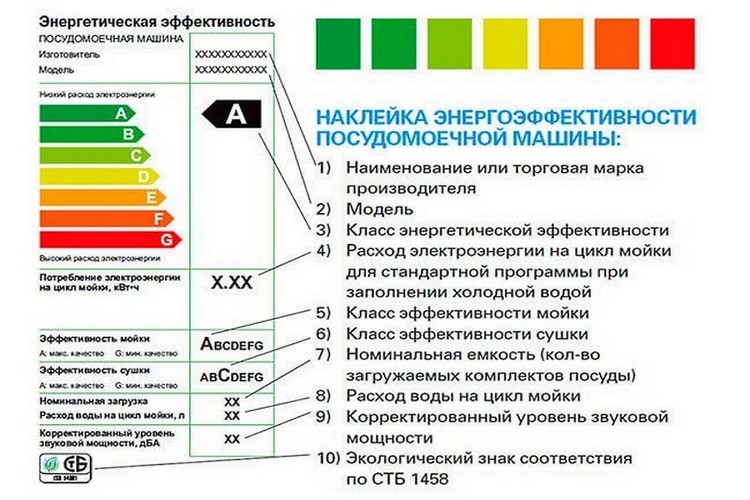
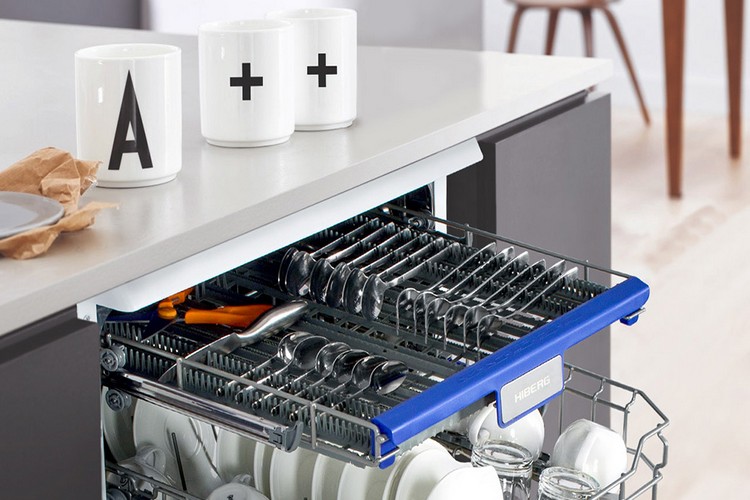
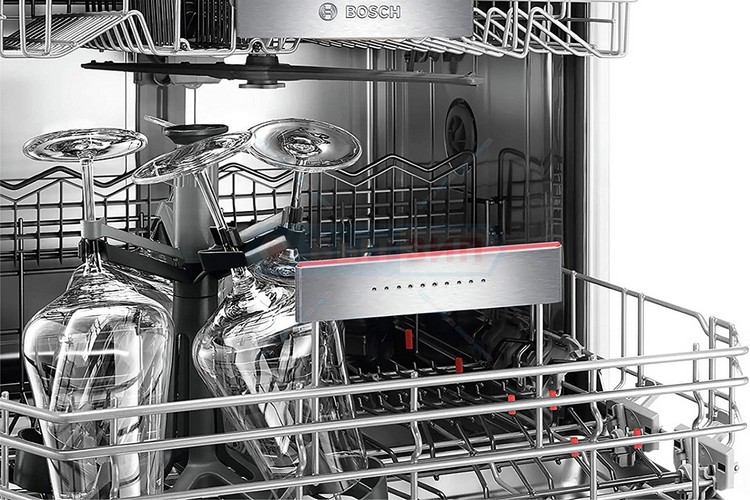

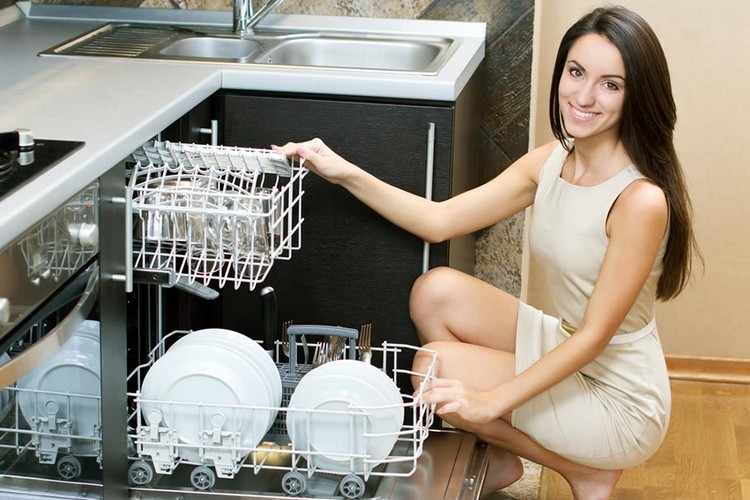

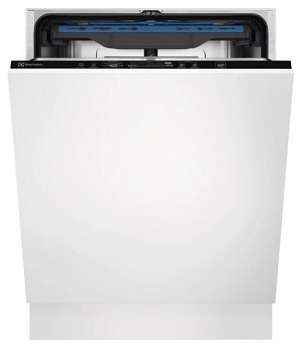
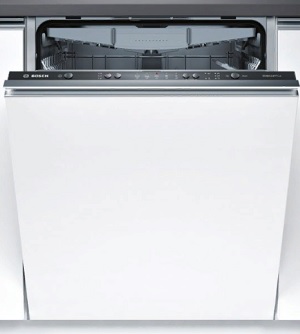
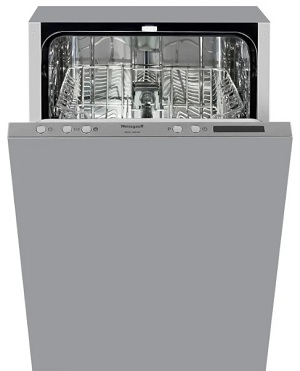


The most interesting thing is that some dishwashers, the same Bosch, have an economy mode, as well as an automatic mode, that is much longer in time than the regular mode. At us, for example on the machine standard at full load about 2.5 hours. But the economy mode, which the machine considers itself 3 hours and 12 minutes. I wonder why it works this way. Or in economy mode, less water is consumed?
Thank you so much to the author of this article for such a useful and informative article! I decided to get a dishwasher, but didn't understand anything about them, so I came across your blog. My knowledge has greatly improved and I have even looked at a couple of options. Tell me please, is it true that the price does not show the quality of the product?
I personally like my hotpoint, no stains on the dishes, did not notice that, and with the drying is fine
Thank you for such useful information. I wanted to buy a dishwasher, but did not know anything about them. But with the help of this article I understood which one to buy.
I have a model with leak protection and other things. i.e., about the same features as the ones listed here. only it costs less)
I totally agree with hotpoint. we got one ourselves. the quality is top notch.